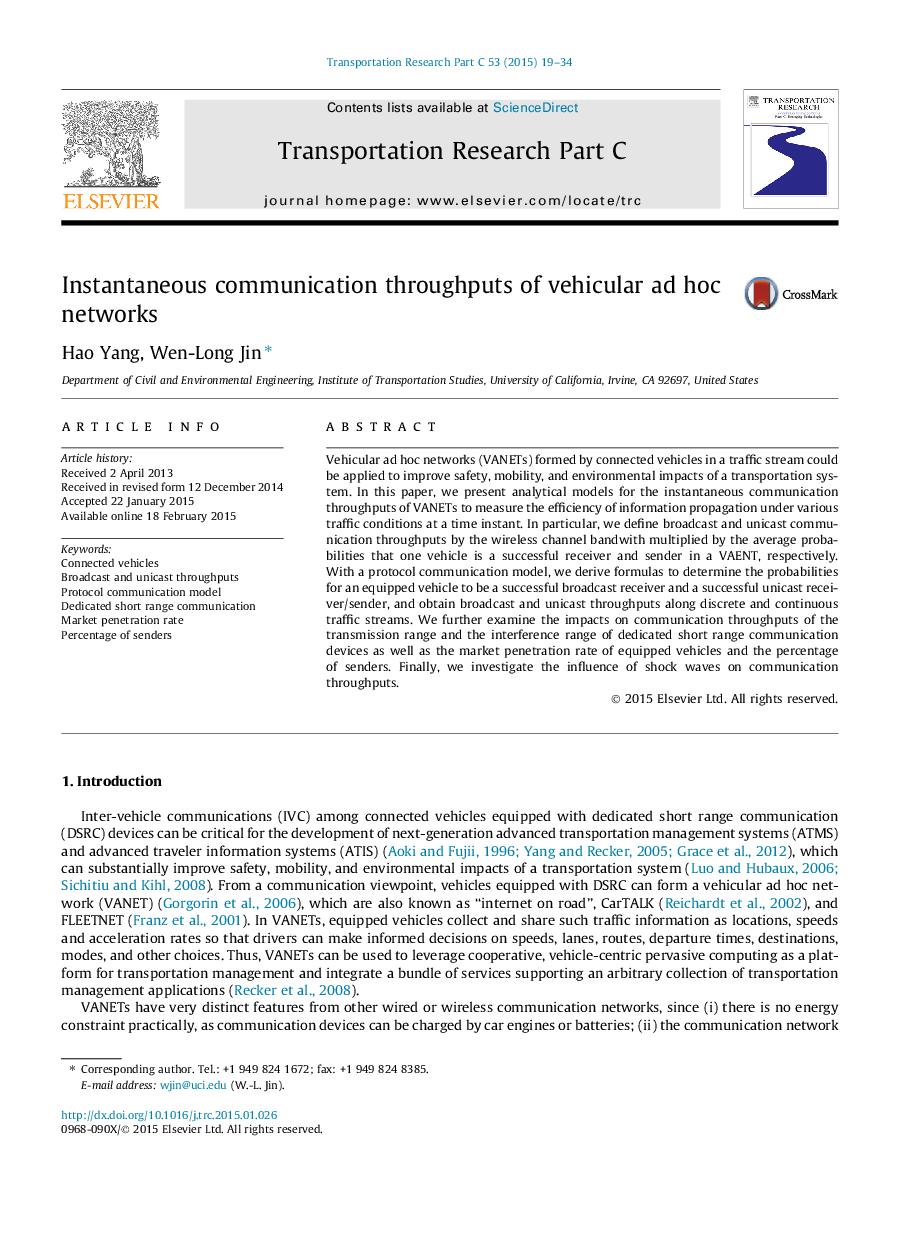| کد مقاله | کد نشریه | سال انتشار | مقاله انگلیسی | نسخه تمام متن |
|---|---|---|---|---|
| 524976 | 868877 | 2015 | 16 صفحه PDF | دانلود رایگان |

• Propose models for broadcast and unicast throughputs of vehicular ad hoc networks.
• Models work for both discrete and continuous traffic streams.
• Analyze impacts of vehicular traffic conditions, including dynamic traffic waves.
• Analyze impacts of market penetration rates and percentages of senders.
• Analyze impacts of communication ranges and communication influence ratios.
Vehicular ad hoc networks (VANETs) formed by connected vehicles in a traffic stream could be applied to improve safety, mobility, and environmental impacts of a transportation system. In this paper, we present analytical models for the instantaneous communication throughputs of VANETs to measure the efficiency of information propagation under various traffic conditions at a time instant. In particular, we define broadcast and unicast communication throughputs by the wireless channel bandwith multiplied by the average probabilities that one vehicle is a successful receiver and sender in a VAENT, respectively. With a protocol communication model, we derive formulas to determine the probabilities for an equipped vehicle to be a successful broadcast receiver and a successful unicast receiver/sender, and obtain broadcast and unicast throughputs along discrete and continuous traffic streams. We further examine the impacts on communication throughputs of the transmission range and the interference range of dedicated short range communication devices as well as the market penetration rate of equipped vehicles and the percentage of senders. Finally, we investigate the influence of shock waves on communication throughputs.
Journal: Transportation Research Part C: Emerging Technologies - Volume 53, April 2015, Pages 19–34